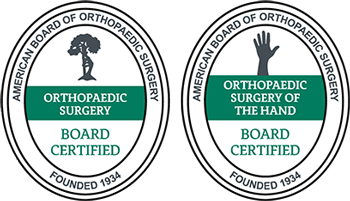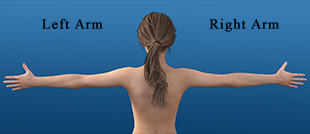What to Avoid With Carpal Tunnel
Carpal tunnel syndrome (CTS) is a prevalent condition that significantly impacts daily life, affecting approximately 3% of women and 2% of men at some point. It occurs when the median nerve, which runs from the forearm into the palm of the hand, becomes pressed or squeezed at the wrist. The symptoms, which include numbness, tingling, weakness, or muscle damage in the hand and fingers, can be debilitating. Carpal tunnel syndrome is particularly common in occupations requiring repetitive hand motions or activities that involve prolonged wrist bending.
While medical interventions such as wrist splints, anti-inflammatory drugs, and surgery are effective treatments, managing daily activities to prevent symptom exacerbation is equally important. Here’s what to avoid and how to modify activities to reduce the strain on your wrists.
Contents [show]
Repetitive Activities
Engaging in repetitive hand motions is one of the primary exacerbators of carpal tunnel syndrome. These activities include texting, typing, knitting, or using hand tools that require constant wrist movement. Here’s how these activities impact CTS:
- Texting: Continuous texting can strain your thumbs and wrists due to repetitive flexing and holding the phone without adequate support.
- Knitting and Painting: These hobbies require repetitive finger and wrist motion, which can increase the pressure on the median nerve.
- Use of Hand Tools: Tools that require gripping and vibrating can exacerbate CTS symptoms due to increased pressure and vibration transmitted through the wrist.
To manage these risks, it’s advisable to limit the duration of repetitive tasks, use ergonomic tools designed to reduce strain, take frequent breaks, and perform stretching exercises to relax the tendons and muscles involved.
Holding Items Too Tight
A common yet overlooked issue is the excessive force used to grip or hold objects, which can aggravate carpal tunnel syndrome. This excessive grip force can occur during everyday tasks such as writing, driving, or cooking. To mitigate these effects:
- Adjust Your Grip: Use a lighter grip and ergonomic tools wherever possible. For example, use pens with a wider grip and soft-touch surfaces, and choose kitchen tools with large, padded handles.
- Mindful Driving: When driving, hold the steering wheel lightly and adjust the grip periodically to prevent continuous strain.
- Ergonomic Adjustments: Select tools and devices that are designed to minimize wrist strain, such as ergonomic keyboards and mouse pads with wrist supports.
Reducing grip intensity and using ergonomically designed tools can significantly lower the risk of exacerbating carpal tunnel syndrome.
Typing at the Wrong Angle
Incorrect hand and wrist positioning while typing is a significant risk factor for developing or worsening carpal tunnel syndrome. When wrists are bent up or down or twisted side to side, it increases the pressure inside the carpal tunnel, aggravating the median nerve. To prevent this:
- Ergonomic Workstation Setup: Ensure that your desk and chair height allow your wrists to be in a neutral position relative to your keyboard.
- Use of Supportive Devices: Implement wrist rests and ergonomic keyboards that keep your wrists straight and reduce strain.
- Proper Keyboard and Mouse Placement: Place these devices so that they do not require extended reaching, which can strain the shoulder and change wrist dynamics.
Adapting your workspace to support a neutral wrist position can prevent the onset of symptoms and aid in managing existing carpal tunnel issues.
Working Through Numbness or Pain
Ignoring symptoms like numbness, tingling, or pain while continuing to engage in activities that stress the wrist and hand can lead to more severe nerve damage. Here are steps to manage these symptoms effectively:
- Recognize and React: At the first sign of discomfort, stop the activity causing it. Apply cold packs to reduce any inflammation and rest the affected hand.
- Seek Medical Advice: Persistent symptoms need professional evaluation. Do not try to work through the pain, as this can lead to permanent damage.
Listening to your body and responding to the early signs of discomfort are crucial steps in managing carpal tunnel syndrome.
Managing Carpal Tunnel Syndrome
Adopting lifestyle changes and therapeutic practices can significantly alleviate the symptoms of CTS:
- Stretching and Strengthening Exercises: Simple wrist stretches and flexing exercises can improve flexibility and strength in the wrist and hand muscles, reducing pressure on the median nerve.
- Physical Therapy: Professional therapists can guide you through exercises that strengthen the wrist, hand, and arm, helping to alleviate pressure on the median nerve.
- Correcting Posture: Poor posture can exacerbate CTS. Maintain a relaxed, neutral shoulder and arm position to avoid additional strain on your hands and wrists.
- Wearing a Splint: Particularly at night, wearing a splint can help keep the wrist in a neutral position, reducing nighttime symptoms and improving sleep quality.
Incorporating these practices not only helps in managing the condition but also improves overall hand and wrist health.
While carpal tunnel syndrome can significantly affect your daily activities and quality of life, understanding and adjusting your lifestyle can greatly alleviate symptoms and improve your well-being. If you’re experiencing persistent hand or wrist pain, consider scheduling an appointment with Dr. Knight at The Hand and Wrist Institute. Dr. Knight specializes in diagnosing and treating wrist conditions, offering personalized treatment plans that can help you return to a comfortable, active life. Don’t let carpal tunnel syndrome hold you back—take action today and regain your hand health.

























